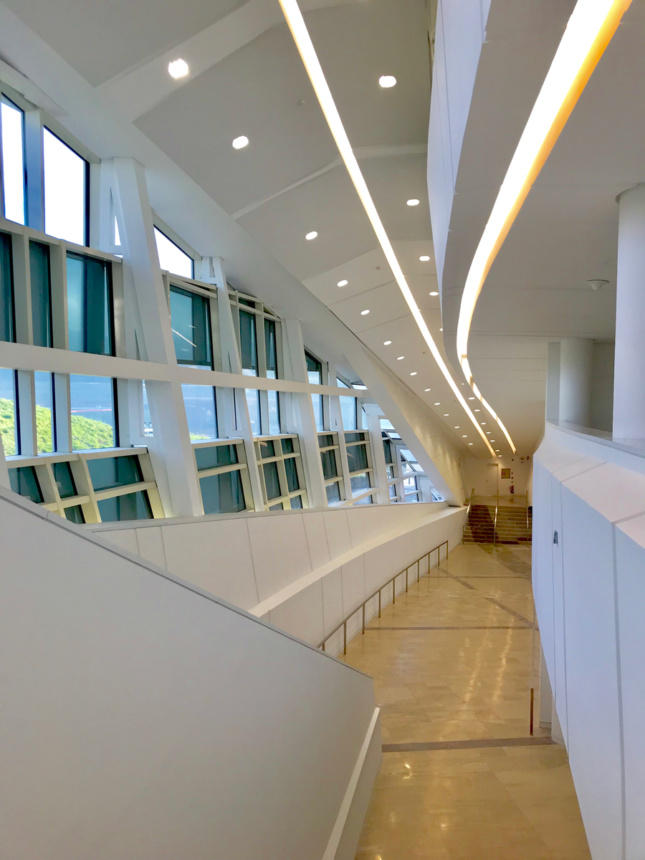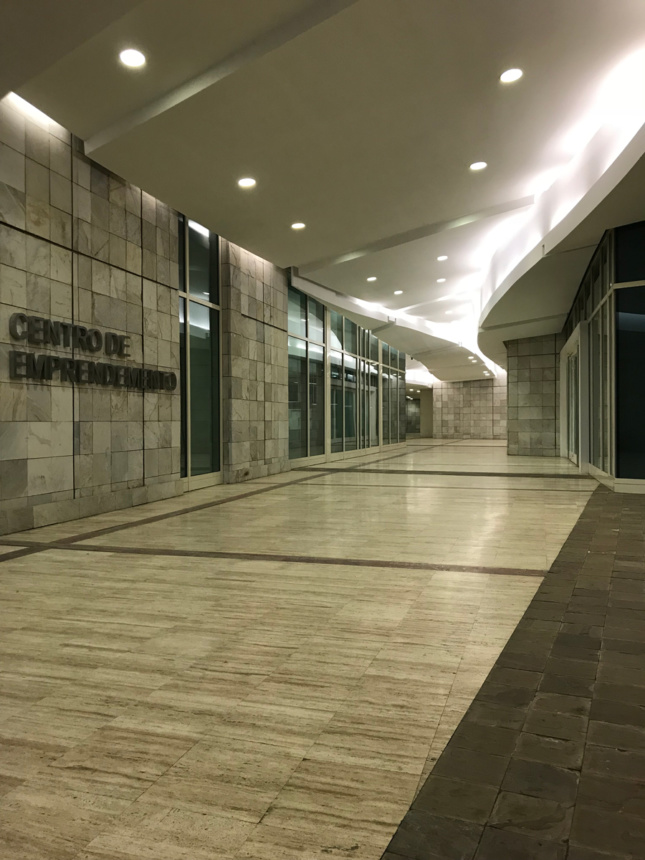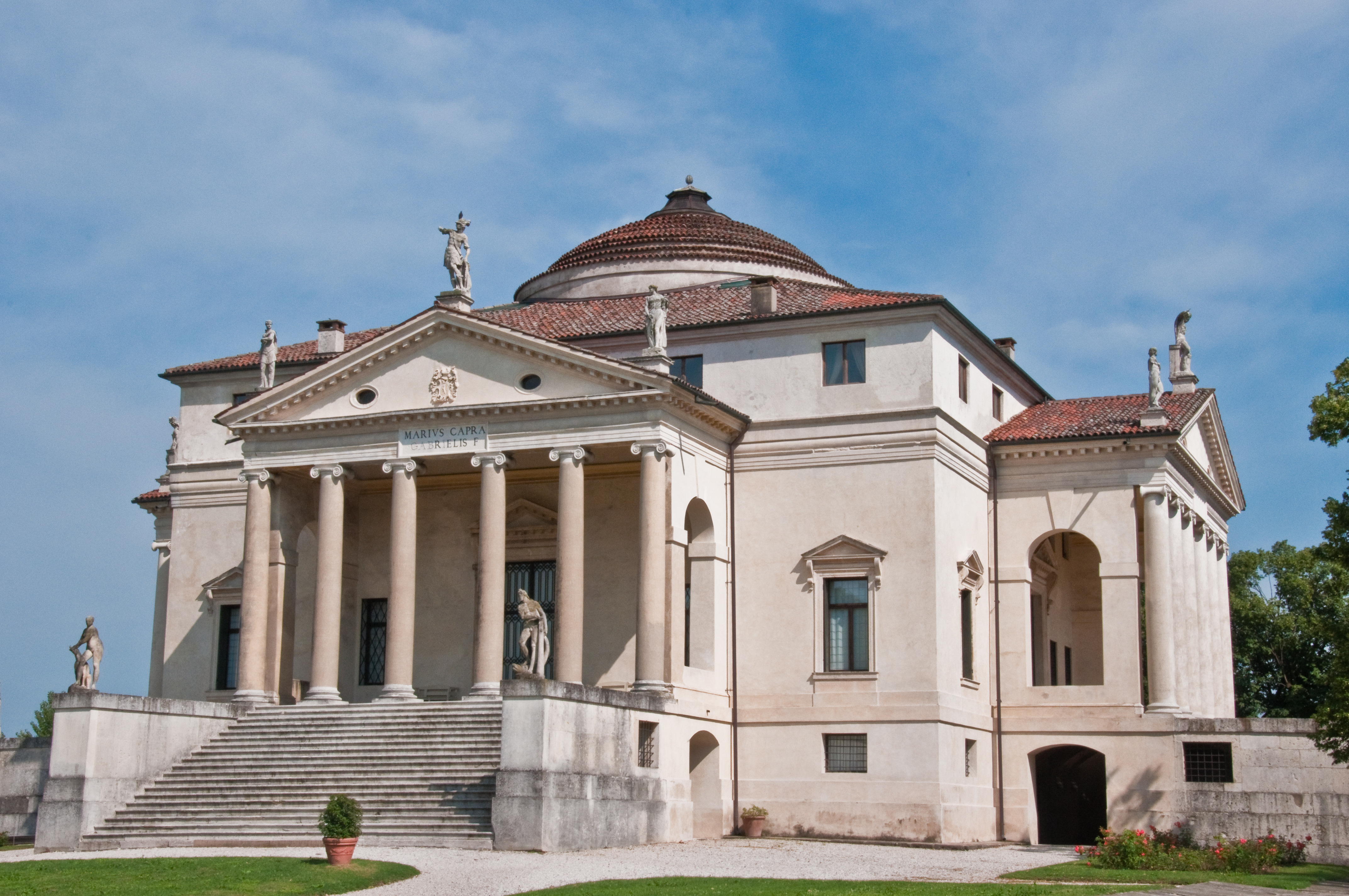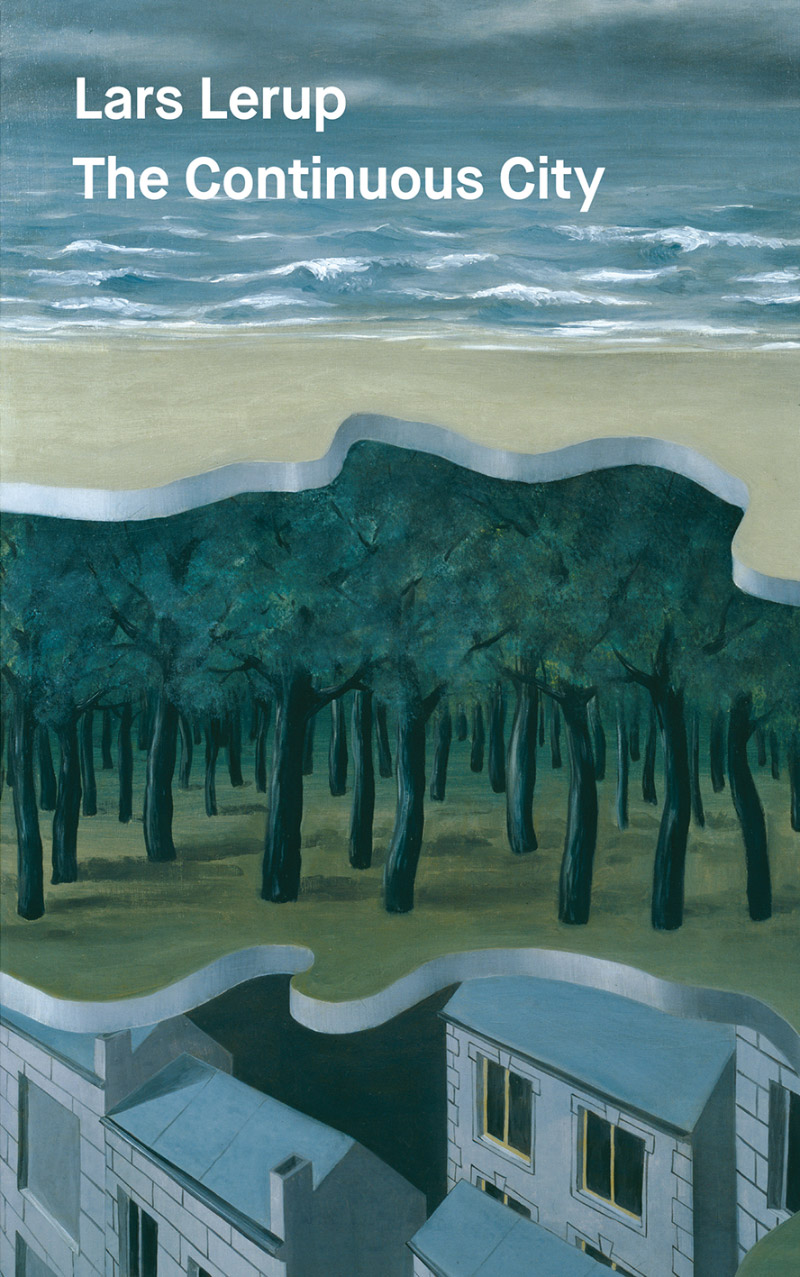On a recent early morning visit to Peter Eisenman‘s Cidade da Cultura I found not one, but two cafés open and buzzing with the chatter of government administrators and entrepreneurial types getting ready to start their workdays.
In Spain, and in particular in Galicia, the northwest region where Cidade is located, cafes are the most reliable measure of civic life. Even the smallest village will have its one café-bar (it is common for the same establishment to function as both), where Galicians gather to share gossip and life stories (Galicians are great storytellers). It’s not entirely unreasonable to refer to Cidade as a village—it is after all a “city” of culture, its site, at 173 acres, larger than the Vatican. And like any city, it has had its share of political and economic imbroglios.
Not too long ago, the project was left for dead after failing to meet promises to be “the Bilbao of Galicia,” an iconic building that would bring both cultural and economic success to the city and region. In 2015, an article in La Voz de Galicia, a regional newspaper, declared that “not even the Apostle can save it,” alluding to the reputed burial place of Saint James in the cathedral of Santiago de Compostela. The old city is an important Catholic pilgrimage site, second only to the Vatican, and Cidade da Cultura was supposed to be another stop for the couple of million visitors that make their way to Santiago de Compostela every year.

Indeed, in 2015 it seemed that only a miracle could save the project. Galicia’s government commissioned this ambitious six-building project in 1999 when Spain was going through a real estate boom (Spain is divided in autonomous regions, and so it’s the regional government that makes budget allocation decisions). But by the time the first two buildings opened in 2011, the boom had ended and the project was an easy target—why build such a large, expensive complex when resources are scarce? Construction of the project was eventually halted, leaving behind four largely empty buildings and two “caries,” or cavities where the two missing teeth should be.
But Cidade is no longer empty and things are looking up. There are many outdoor events in the fair weather months between April and September, the surrounding ramped surfaces of the roofs forming a kind of amphitheater for the performances in the center. And all year round there are employees from both public and private entities working in Cidade, the people that keep those two cafes in business.
When I met with Cidade’s director Ana Isabel Vázquez Reboredo, she reiterated what she had previously stated in interviews since she started in this position two years ago, that her goal is to make Cidade into a resource for the entire region of Galicia, not just the city of Santiago de Compostela where it’s located.
Santiago de Compostela is the famous pilgrimage city, and Cidade has become a kind of architecture pilgrimage for students and architects. A new highway entrance promises to make the project more accessible to national and international visitors. Cidade is now a fifteen-minute drive from the airport, and from there, Madrid is a one-hour flight and Paris and London only two hours away.
Twenty years on, two of its buildings remain unbuilt, but both its plaza and the four buildings already completed are vibrantly inhabited. There are many outdoor performances in the fair-weather months between April and September, the surrounding ramped surfaces of the roofs forming a kind of amphitheater for the performances in the center. There are also employees from both public and private entities working in Cidade, the people that keep those two cafés I mentioned earlier in business.

The project is being used, but much of the original programming has changed. For example, the “Hemeroteca,” or newspaper archive, had originally been given its own building but is now housed in the library. What was originally the Hemeroteca is now the “Centro de Emprendemento,” a business incubator facility.
And how does the architect feel about this? In a recent conversation with Peter Eisenman in his office in New York, he was excited to see the spaces in his project utilized in new ways. “The idea of the project was always to offer a framework for new cultural ideas that are constantly emerging,” he said.
The project is a case study in the complexities of a large project that has to negotiate local, regional, and international socio-cultural and socio-political concerns. Is the project benefiting the people already living in Santiago de Compostela? Can the region of Galicia feel ownership of this project even though it’s tied so closely, in both location and design, to one city?
And how do you get there? One westernmost coastal town in Galicia, Finisterre, was the Roman Empire’s “end of the earth,” and even today getting there still feels like a pilgrimage, completed only by the most faithful. The undulating hilly landscape that makes Galicia so picturesque is also what makes it impossible to get anywhere in a straight line.
The A-9 highway wraps around the Gaiás hill where Cidade is located like a ribbon, and driving to it I felt like I was engaged in some baroque dance with it, moving around it in arcs at one hundred kilometers an hour until finally arriving, if not at the end of the earth, at the culmination of a worthy pilgrimage.
Maria Sieira is an architect based in New York City. She worked for Eisenman Architects on the Cidade da Cultura during its design development. Currently, she teaches architecture at Pratt Institute in Brooklyn, New York, and in the Compostela Institute summer program in Spain.










